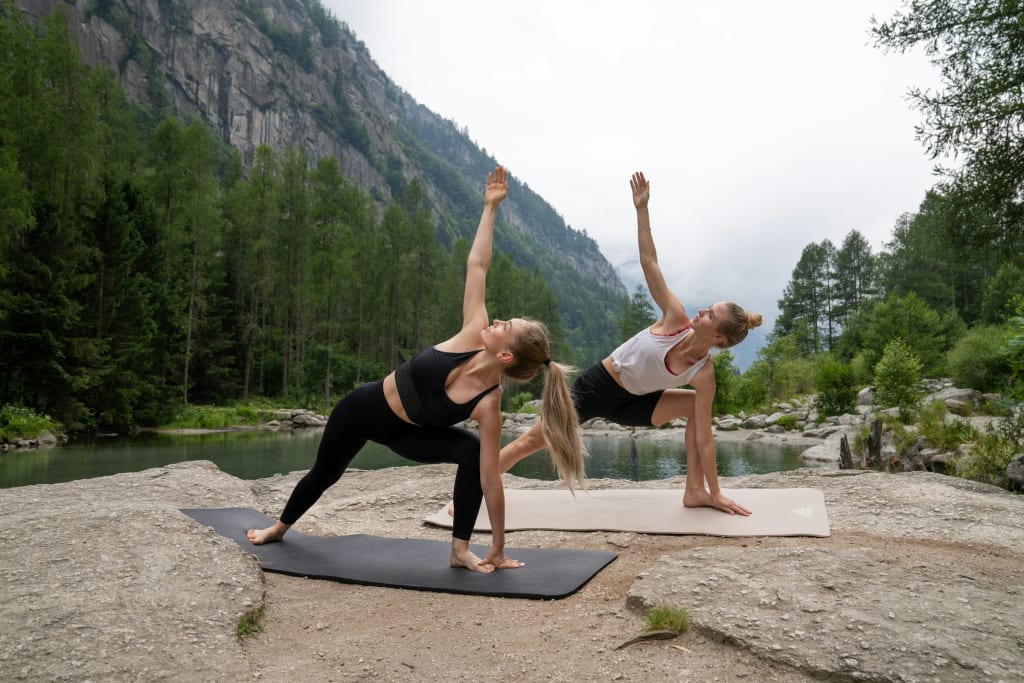How to Practice Yoga for Free
You don't need any money to get the benefits from this ancient practice.

There’s a good chance that you could benefit from practicing yoga. The ancient practice is associated with improved flexibility and strength, better mental health, and reduced stress and anxiety.
However, yoga in the West can be expensive. The average American yoga practitioner spends about $1,000 a year on classes, equipment, and more, according to a study of yoga in the U.S. The industry brings in about $9.09 billion annually.
Despite that, yoga itself doesn’t come with a price tag. You can get all the benefits of yoga without spending a single dime as long as you know where to look.
Resist the temptation to buy expensive yoga clothes
First things first — you don’t need to buy any gear or accessories to practice yoga.
Although modern yoga is associated with a lifestyle awash with expensive leggings, green juices, and retreats to Costa Rica, these are all trappings of consumer culture — not yoga.
Many yogis who developed the practice thousands of years ago in ancient India eschewed worldly possessions and comforts for a more spiritual path.
Contrary to popular belief, you don’t need stretchy pants to practice yoga asana (the Sanskrit name for yoga poses). You’ll be good to go as long as your clothing is comfortable and doesn’t restrict your movement.
A pair of sweatpants or basketball shorts can easily double for yoga leggings or shorts.
Use alternatives to props
If you buy one thing for your practice, it should be a yoga mat. But yoga mats aren’t strictly necessary and can be easily swapped for a rough blanket or beach towel.
Props are another thing that can aid you in your practice, particularly if you’re a beginner. But you can easily swap common everyday objects for most yoga props.
Here are a few other simple swaps for standard props:
- As mentioned, you can use several things instead of a yoga mat, including Mexican-style blankets, beach towels, rugs, or carpeting.
- Yoga blocks can be swapped for books, boxes, or any rectangular object with a bit of weight.
- You can easily use a belt or scarf instead of a yoga strap.
- Those interested in meditation or restorative yoga can use blankets and pillows in place of yoga bolsters and cushions.
Check out free classes — both online and near you
There are plenty of free yoga options, both online and in-person. Although they may not have a studio’s flashy branding or Zen decorations, many free yoga classes are just as good as what you’d find elsewhere.
First, if you have an existing gym membership, you can check out what yoga classes they offer there. Generally, these will be more fitness-focused and spend less time on the meditative aspects of the practice. But, they’re a good starting point.
If you’re intimidated to start yoga in-person, a wealth of video options are available for free. You can’t go wrong with Yoga with Adriene, but she’s not the only teacher offering yoga classes for free on YouTube.
Many yoga teachers also offer free in-person yoga classes to the community to give back. Check out MeetUp groups in your area, or browse the community pages on Facebook.
Develop a home practice
The deepest benefits of a yoga most often come with a home practice. For example, basically every yoga teacher training emphasizes that teachers must commit to a personal yoga practice.
This step will come in time. When you’re starting, it’s best to work with a knowledgeable teacher. In-person yoga teachers may give you hands-on adjustments to ensure you’re in alignment. Online yoga teachers will be able to demonstrate form and offer good cues.
Once you have a few months (or years) of yoga practice, you can start playing around on your mat at home without following a class.
This is an opportunity to explore all that yoga has to offer. Move joyfully and let your body and intuition guide what type of poses you do.
Go beyond yoga poses
Although we mainly associate yoga with physical poses in the West, classical yoga encompasses a system of practices — from meditation to philosophy.
Basically, you don’t even need to practice physical poses to “do yoga.” In fact, ancient yogis used the physical poses as a way to ground the body for meditation.
Meditation is another aspect of the practice that you can do for free. Look up guided meditations on YouTube or use a free meditation app like Insight Timer.
Reading about yoga and yogic philosophy is also “practicing yoga.” Find a few yoga blogs that you like and check out a yoga philosophy book from your local library.
Thanks for reading — and happy practicing!
About the Creator
Mike Peterson
Poet. Yoga teacher. Nature enthusiast.






Comments
There are no comments for this story
Be the first to respond and start the conversation.